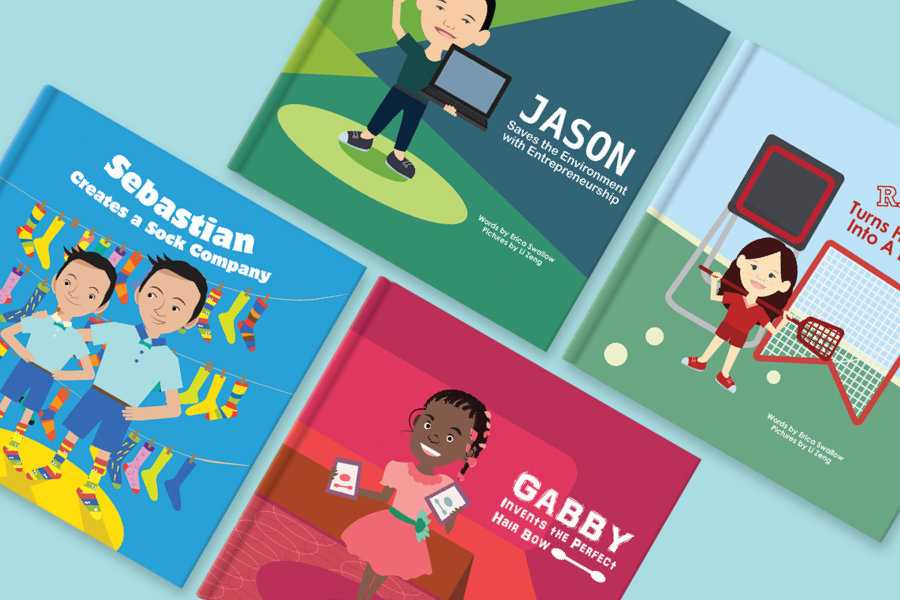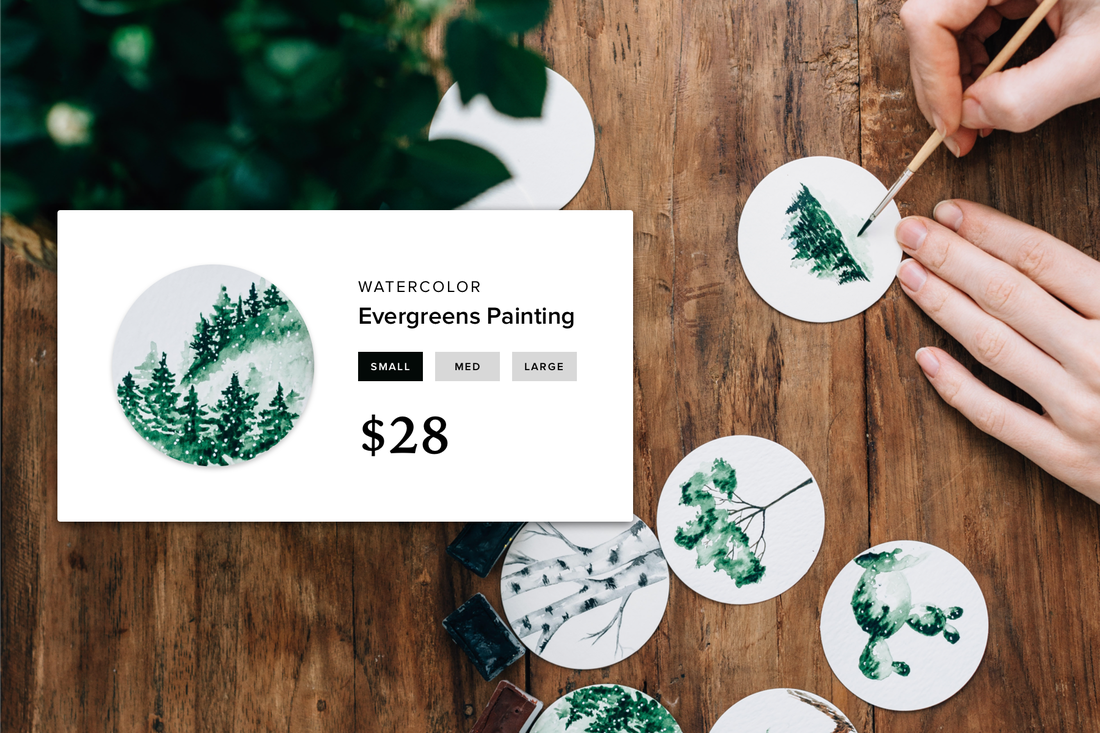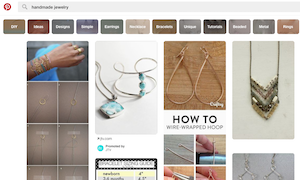It takes more than a great product or service to build brand loyalty. To be truly competitive, you need to create an experience that keeps your customers coming back for more. You need an irresistible brand story.
But don't worry, it doesn't take a big marketing budget to harness the power of brand storytelling. Here four easy storytelling techniques to get you started.
Step One - Finding the Right Audience
The first step in creating a compelling narrative is to know your audience. What are their interests? What do they want to hear about your product or brand? If you're selling fashion accessories, chances are that style is important to your customers. If you're a nutrition coach, your clients are probably seeking out a healthier lifestyle.
But don't be afraid to go beyond the obvious.
Dig deeper and consider the bigger picture. What are the values your audience cares about deeply? This may involve creating marketing personas, eavesdropping on Twitter lists, or sitting in on Facebook groups to find out what larger world issue your brand can tap into that would secure the loyalty of your target market.
Look at Starbucks. The company's target audience loves coffee, obviously. The easy choice would steer the brand story toward coffee aficionados by sharing coffee trivia, how-tos, recipes and stories about how they choose and source their ingredients. However, by getting to know its audience, Starbucks discovered that customers care more deeply about their communities and responsible consumption. The twitter bio says it all:
Step One - Finding the Right Audience
The first step in creating a compelling narrative is to know your audience. What are their interests? What do they want to hear about your product or brand? If you're selling fashion accessories, chances are that style is important to your customers. If you're a nutrition coach, your clients are probably seeking out a healthier lifestyle.
But don't be afraid to go beyond the obvious.
Dig deeper and consider the bigger picture. What are the values your audience cares about deeply? This may involve creating marketing personas, eavesdropping on Twitter lists, or sitting in on Facebook groups to find out what larger world issue your brand can tap into that would secure the loyalty of your target market.
Look at Starbucks. The company's target audience loves coffee, obviously. The easy choice would steer the brand story toward coffee aficionados by sharing coffee trivia, how-tos, recipes and stories about how they choose and source their ingredients. However, by getting to know its audience, Starbucks discovered that customers care more deeply about their communities and responsible consumption. The twitter bio says it all:
Inspiring and nurturing the human spirit -- one person, one cup, one neighborhood at a time.
By keeping the content focused on the heart of its audience, Starbucks has managed to engage millions of followers on social media, and is now focusing its efforts on developing a full-blown media companydevoted to sharing stories around the social issues the company stands behind.
Step Two - Uncovering a Powerful Story
Sit down and carefully outline your brand story. How did you evolve from idea to execution? Ask yourself these questions about your business:
Groove sells simple help desk software, but its brand storytelling effort is about the company's journey to 500k in monthly revenue -- and it's paying off. By being transparent and open about successes and failures, Groove inspires other business owners who are on a similar startup quest (while engendering trust and sales in the process!).
Once you've got an outline for your brand story, think about the appropriate way to convey this story authentically, and reference it over and over in all your messaging, copy, visuals, and assets.
You can do this through any content marketing channel -- but pick one you like, because telling effective stories takes time and effort.
For example, if you're better with images than words, consider an Instagram feed that shares your brand's story. Dove spreads a brand message of beauty and strength with its Instagram account.
If you shine on camera, consider hiring a videographer to put together branded videos that share your business's story, struggles and triumphs. Think of it as a movie, with your brand as the hero the audience is rooting for.
Step Three - Willingness to be Vulnerable
A little empathy goes a long way. That's why it's important that storytelling techniques share failures as well as triumphs. Let your customers peek into the human side of your business operations. Send out personal notes along with each newsletter you schedule. Make sure the faces of your company are visible on your website, like Kickstarter's team page. If you want people to relate to your brand story, they will need to be able to identify with the characters involved.
Step Four - Direct Engagement
And finally, effective stories engage the audience.
Chipotle has created narrative branded videos, interactive website features, and content marketing campaigns extolling the value (product, and price) of how they source farm-fresh ingredients. The brand story? Chipotle makes ethical choices about food production -- and that's helping our planet, communities and health. The company engages and challenges its audience to become part of its brand story. When customers buy Chipotle's products, they are also supporting the cause of healthy food/farmers/communities.
The underlying message behind all the copy, content and marketing behind your brand storytelling efforts should demonstrate that your company is part of something bigger. What that something may be — an environmental or social cause, a political movement, an aesthetic or appeal — varies from brand to brand. When customers buy into your content and stay engaged with your brand story, your business will grow with the support of a loyal base.
Step Two - Uncovering a Powerful Story
Sit down and carefully outline your brand story. How did you evolve from idea to execution? Ask yourself these questions about your business:
- What problem were you trying to solve? Did you solve it?
- Did you experience any setbacks or failures along the way?
- Did you overcome adversity?
- What kept you going through difficult times?
- What was the reward of all your hard work?
Groove sells simple help desk software, but its brand storytelling effort is about the company's journey to 500k in monthly revenue -- and it's paying off. By being transparent and open about successes and failures, Groove inspires other business owners who are on a similar startup quest (while engendering trust and sales in the process!).
Once you've got an outline for your brand story, think about the appropriate way to convey this story authentically, and reference it over and over in all your messaging, copy, visuals, and assets.
You can do this through any content marketing channel -- but pick one you like, because telling effective stories takes time and effort.
For example, if you're better with images than words, consider an Instagram feed that shares your brand's story. Dove spreads a brand message of beauty and strength with its Instagram account.
If you shine on camera, consider hiring a videographer to put together branded videos that share your business's story, struggles and triumphs. Think of it as a movie, with your brand as the hero the audience is rooting for.
Step Three - Willingness to be Vulnerable
A little empathy goes a long way. That's why it's important that storytelling techniques share failures as well as triumphs. Let your customers peek into the human side of your business operations. Send out personal notes along with each newsletter you schedule. Make sure the faces of your company are visible on your website, like Kickstarter's team page. If you want people to relate to your brand story, they will need to be able to identify with the characters involved.
Step Four - Direct Engagement
And finally, effective stories engage the audience.
Chipotle has created narrative branded videos, interactive website features, and content marketing campaigns extolling the value (product, and price) of how they source farm-fresh ingredients. The brand story? Chipotle makes ethical choices about food production -- and that's helping our planet, communities and health. The company engages and challenges its audience to become part of its brand story. When customers buy Chipotle's products, they are also supporting the cause of healthy food/farmers/communities.
The underlying message behind all the copy, content and marketing behind your brand storytelling efforts should demonstrate that your company is part of something bigger. What that something may be — an environmental or social cause, a political movement, an aesthetic or appeal — varies from brand to brand. When customers buy into your content and stay engaged with your brand story, your business will grow with the support of a loyal base.
 Melissa Haney Melissa is a writer specializing in social media and web development.
Melissa Haney Melissa is a writer specializing in social media and web development.





